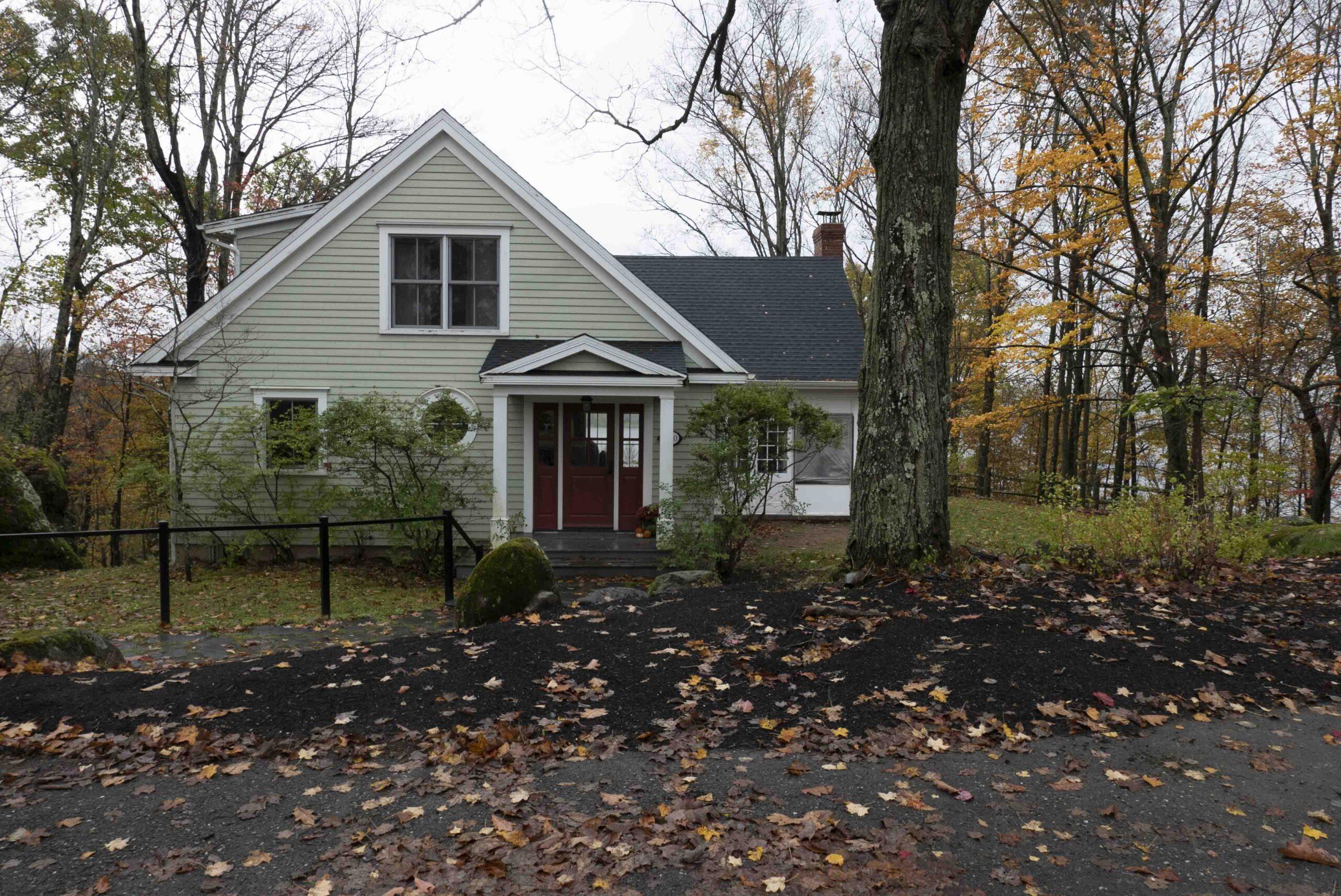Coming home after a tour of gardens in the UK is always a shock. English gardens are so lush, so flowery, so impressive in predictable and unpredictable ways. In comparison, my garden in mid-September is a let-down. In fact, it makes me think of a gangly 13-year old. The teen may have good bones and a sense of fashion but for the moment the best features are hidden behind braces and a spotty face.
Like that gangly teen, my garden is full of promise. It has good bones even if they do seem hidden today, as the season stretches out between summer and glorious fall. What it needs is time — time to mature, time for pimples to disappear, for newly straightened teeth to emerge and smile enticingly. Or perhaps a new wardrobe, more appropriate for its age.
This summer’s major wardrobe change was the transformation of the Big Lawn to the Big Meadow. (Perhaps it is more appropriately called the Big Prairie but that name conjures up too large a space. So the Big Meadow it remains.)
Coming home, I found the Big Meadow had been cut. The shorn look was a shock after a summer of long, waving grasses, but the path we’d mown from June through August continued to offer a curving contrast in colour and texture.
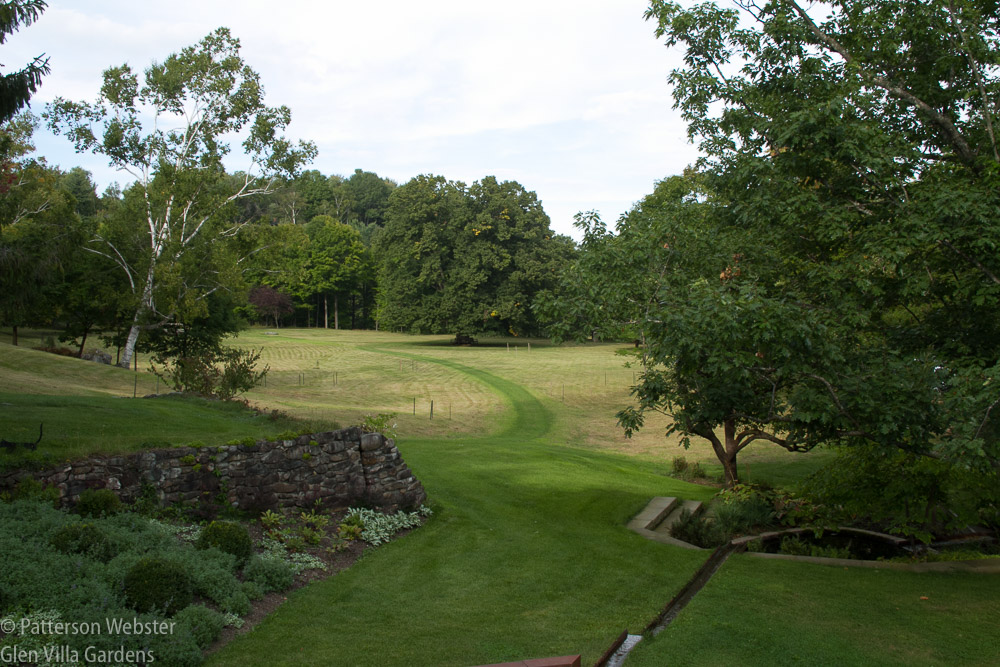
The line of green clearly marks where you are meant to walk. But now that all the grass is cut, it is easy to walk anywhere.
In early July I planted one specimen of Agastache ‘Blue Fortune’ and now I wish I had bought more. Mixed in with the tall grass, the plant looked good all summer and bloomed non-stop. I am hoping it will self-seed but if it doesn’t, I plan to take cuttings and spread them around.
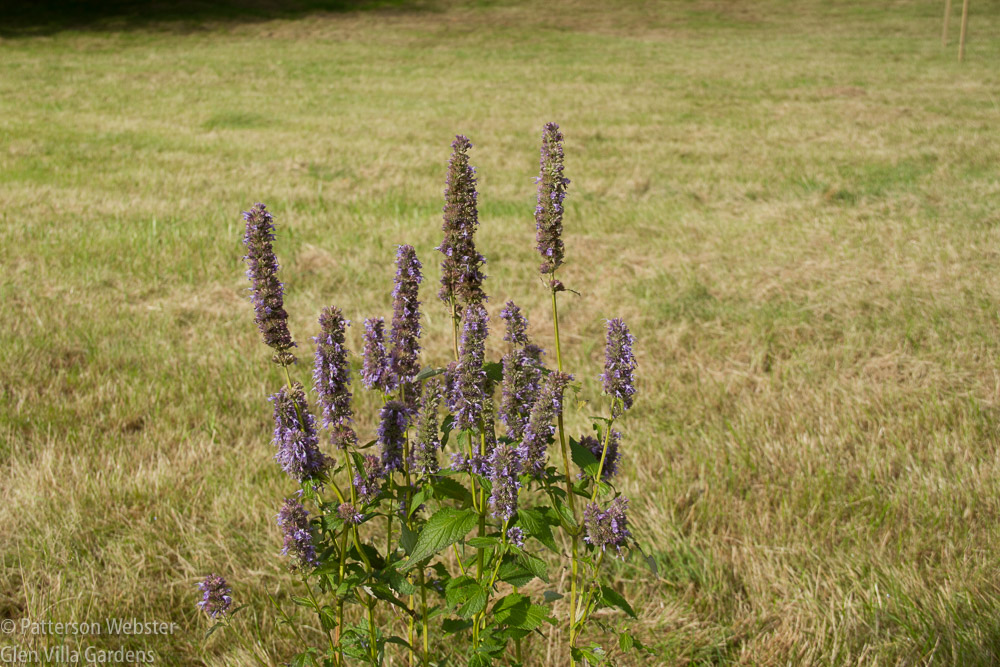
The blooms are coming to an end now but have been constant all summer. I like the form and colour; they mix well with the grasses and reinforce the loose, informal feel I’m aiming for.
In August I staked out sections where I wanted to encourage wild-like flowers to grow. Yesterday we tilled the ground and scattered a variety of seeds on the bare earth, a combination of umbellifers and spiky plants that I hope will look as comfortable in the setting as the Agastache did. This was definitely a lazy approach — the whole job took only an hour or two, so if it doesn’t work, little is lost.
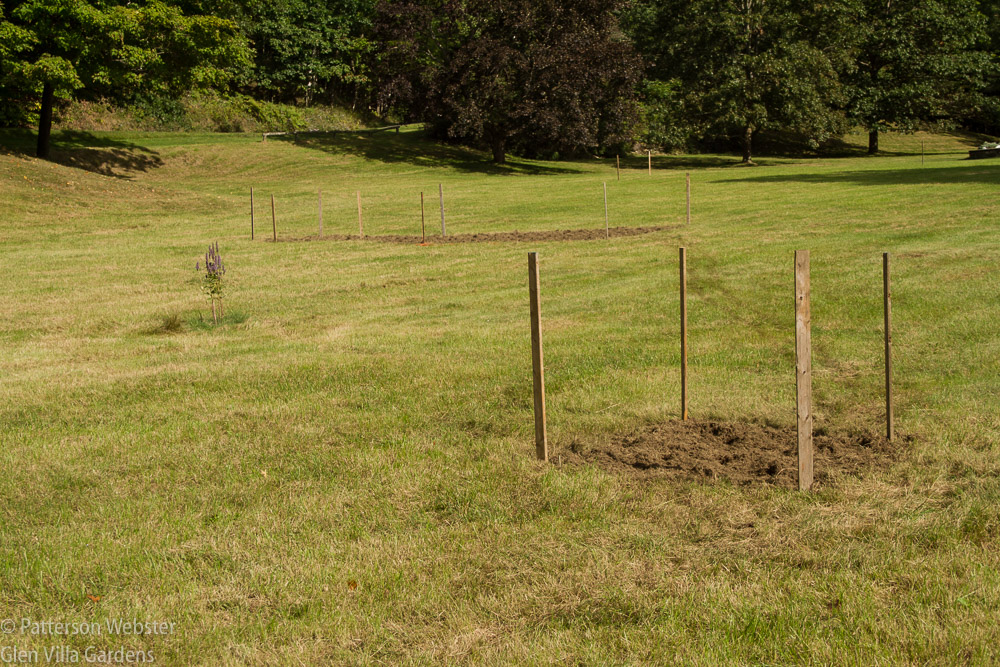
Rather than growing seeds in flats and then transplanting them, we simply sowed the seeds directly in place. You can see the single Agastache in between the two staked areas. Sticking out of the mown grass it looks lonely but surrounded as it was before mowing, it looked very much at home.
The amazing thing was the amount of grass, aka hay, that came off the lawn. Four enormous bales and one smaller one were cut by a neighbour and left on the bank above the lake. Our grandchildren slide down this part of the Big Meadow in winter, so the bales will remain in place until spring, a not-so-soft fence that will protect them from the rocks and the lake below.
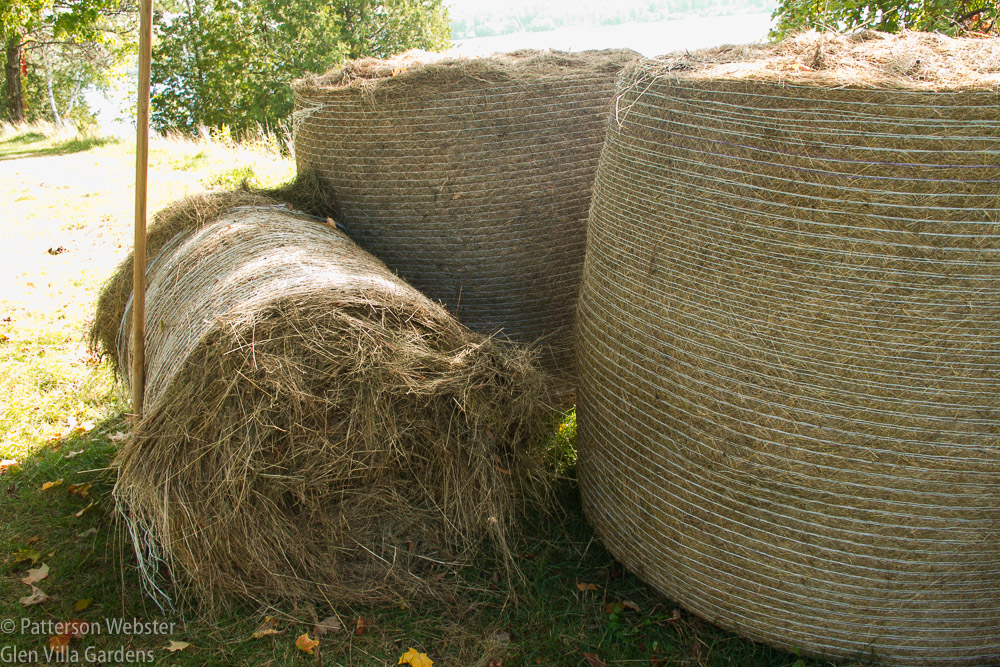
Bales come in different sizes. These are 4.5 ft across. Three of these bales = a lot of hay.
A second spruce-up-the-wardrobe project completed this week involved moving about 50 shrubs of various sizes from the upper to the lower field. Three years ago we completed two borders in the upper field, protecting the shrubs inside against the deer with fences I designed. Plants in one of the borders thrived, going from strength to strength.
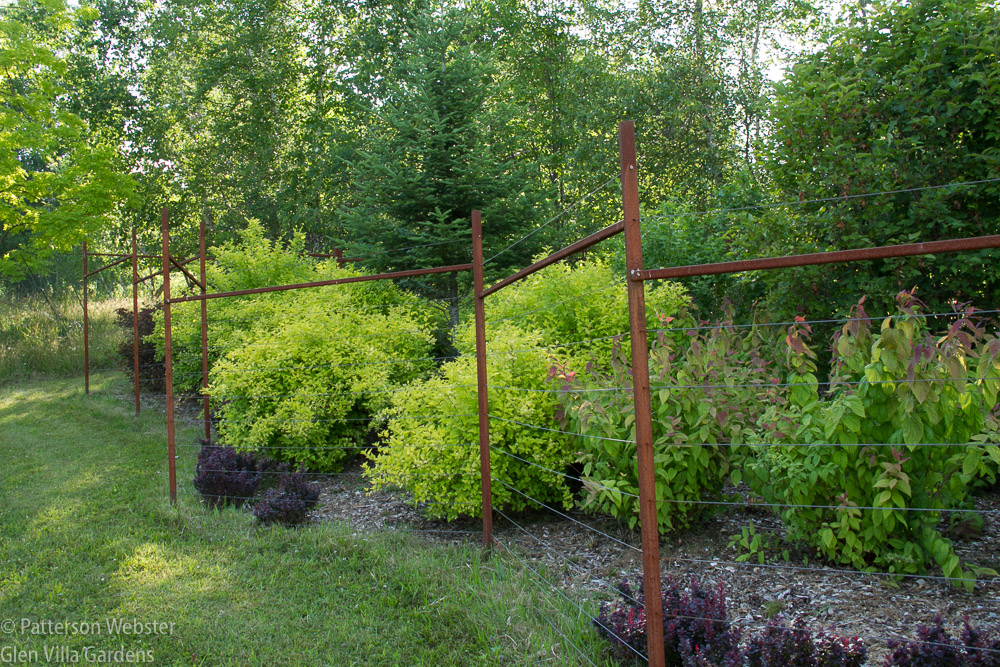
This view shows part of the thriving shrub border in July this year. In another year or two, the ground should be completely covered, eliminating the need for mulch.
Plants in the other border did not thrive. This area received a little less sun and was considerably damper which may explain the different growth rates. But the bigger problem was the border’s proximity to the ten maple trees I planted to mark the birth of ten of our eleven grandchildren. (The eleventh tree is a crabapple, soon to be relocated and possibly replaced by a different fruit-bearing tree.)
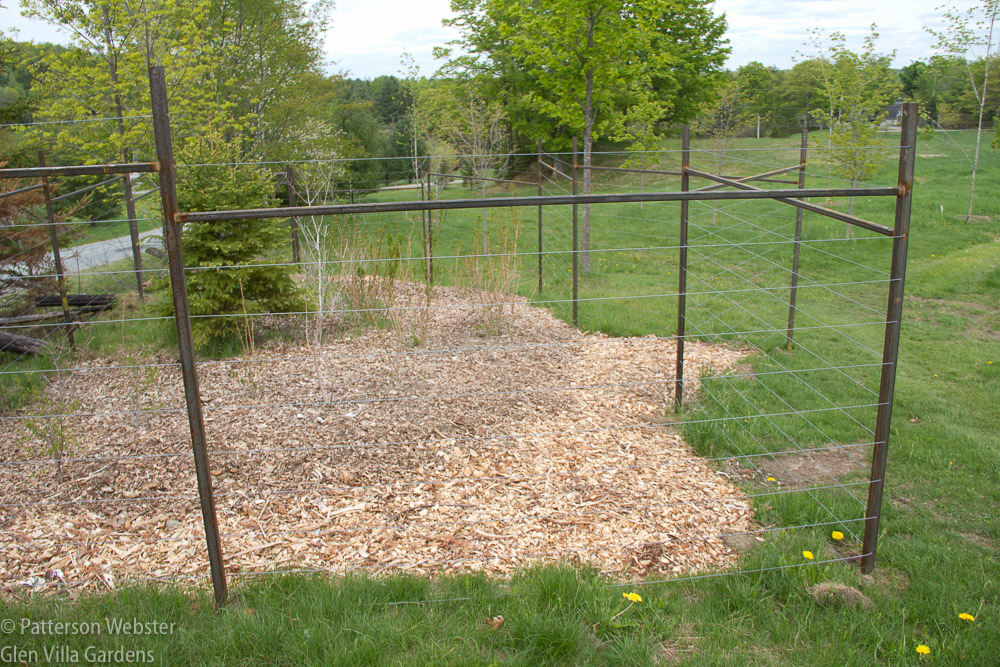
This view from two years ago gives a grimmer picture of the border than it was this year. The photo shows a pointed triangle that protrudes into the field and the trunk of a grandchild maple tree growing nearby. This tree felt crowded by the fenced area.
This summer, after much looking and head-scratching, I decided that the grandchildren trees needed to be given more prominence. To set them off from the field and the long grass around them, we mowed the area in late July. The results were quite pleasing, particularly after a sprayed-painted white line defined the edges.
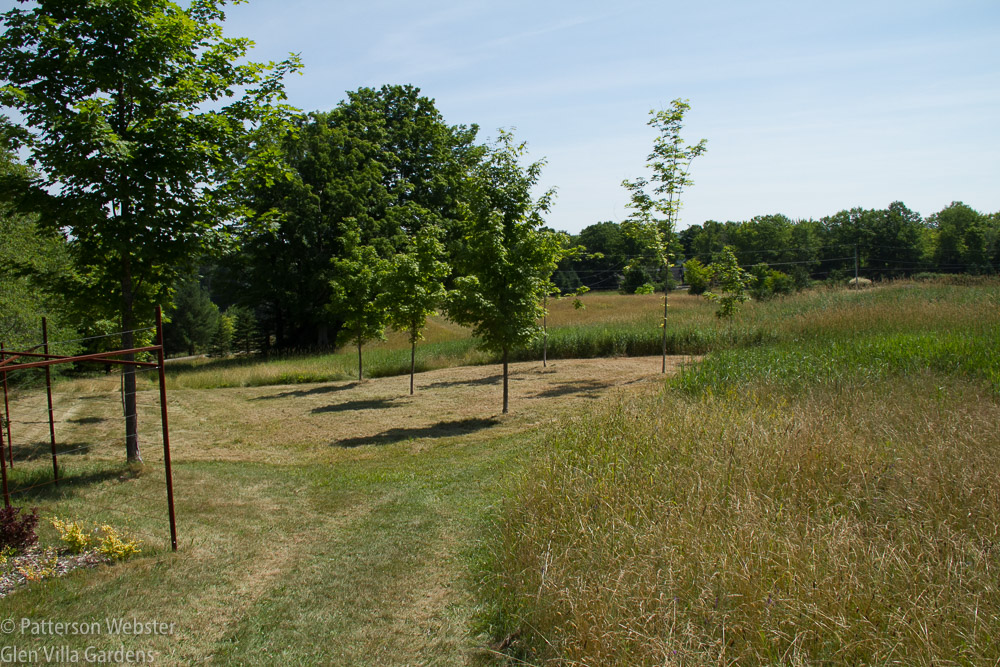
You can’t see the white line because I took this photo before spray painting it. But you can see on the left the triangular bit of the fence surrounding the shrub border and the trunk of the same grandchild maple shown in the previous photo.
Defining the area made it clear that the shrub border and the grandchildren trees were competing for attention. The two features were simply too close together. And since the shrubs weren’t doing well where they were, moving them seemed a good solution.
Finding a new location didn’t take long. In the lower field beside the driveway leading to my daughter’s house was an interesting rock. While it barely showed itself, the shape of the ground suggested that more of it was hiding below.
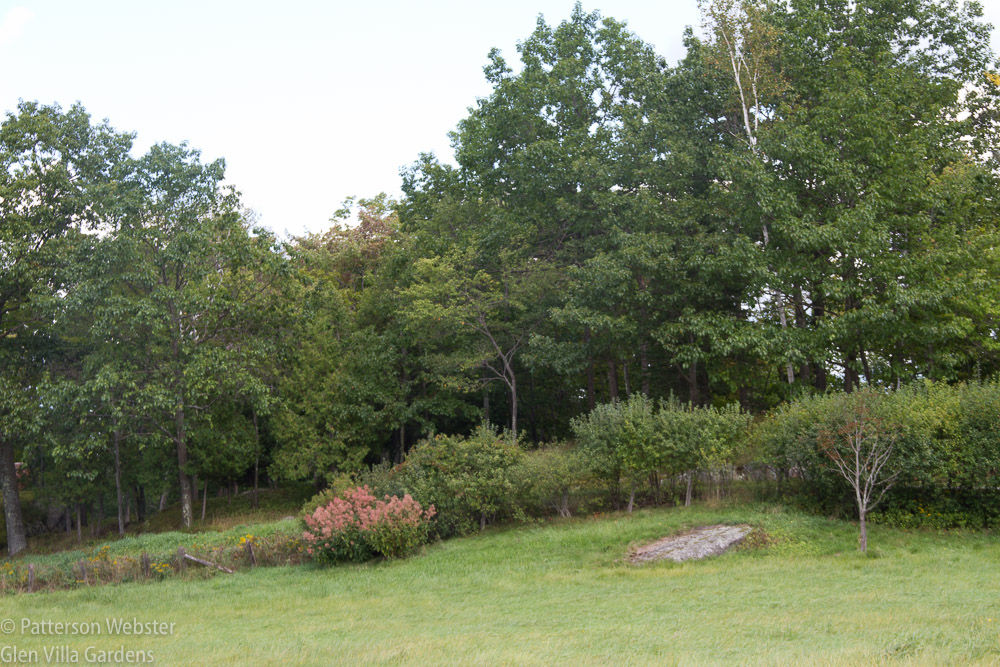
The pink flower is Persicaria polymorpha, a plant that grows very well for me. This was the view two years ago, in September 2014. The driveway to my daughter;s house is hidden behind the chokecherries.
A little digging proved this to be true.
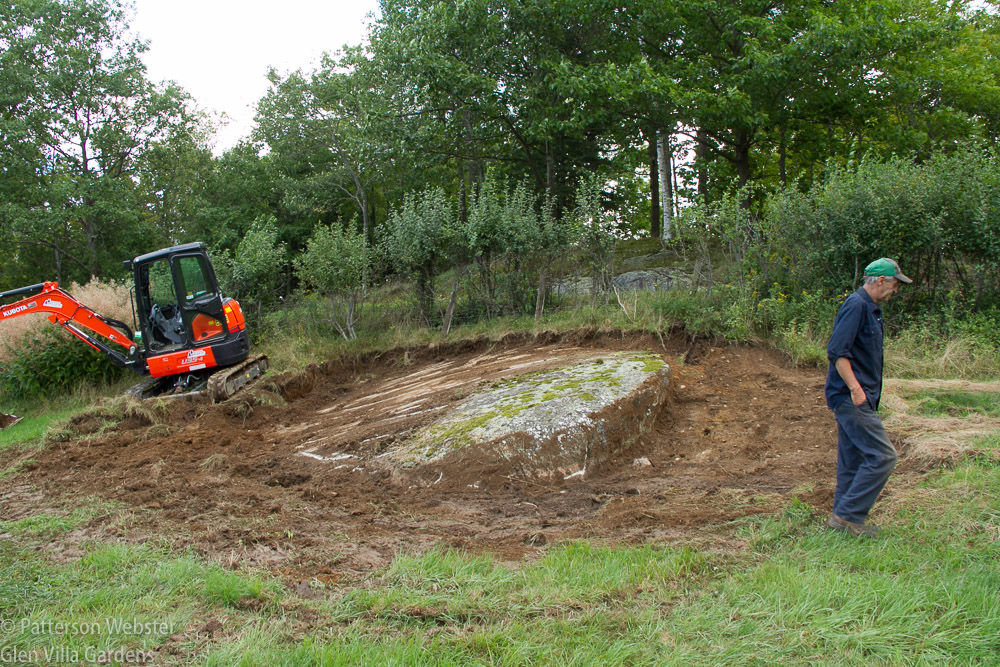
Watching the rock emerge bit by bit was like watching a teenager’s pimples disappear to disclose the beauty hidden beneath. Or sort of like that.
Before heading to England, I laid out the rough outline of the new bed. I wanted to give the 50 or 60 shrubs that were crowded together enough room to grow without leaving too much space to fill in next year.
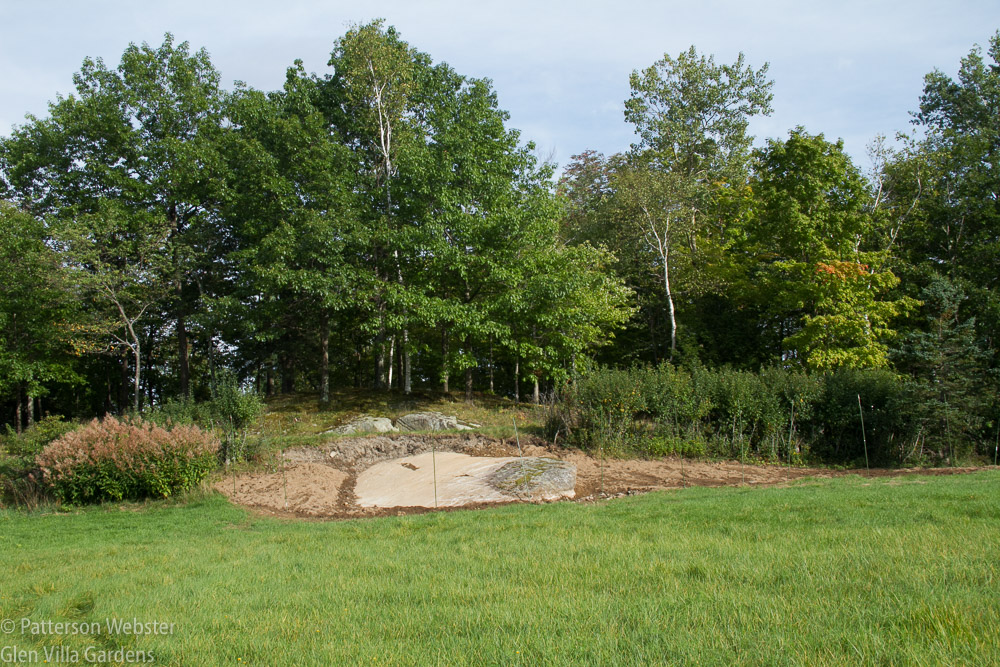
I plan to divide the Persicaria polymorpha, planting a smaller clump on the right side of the bed in front of some spruce trees that are just out of camera range.
Yesterday, after a rainfall that lasted long enough to soak the roots, we dug the shrubs and loaded them onto the back of the trailer.
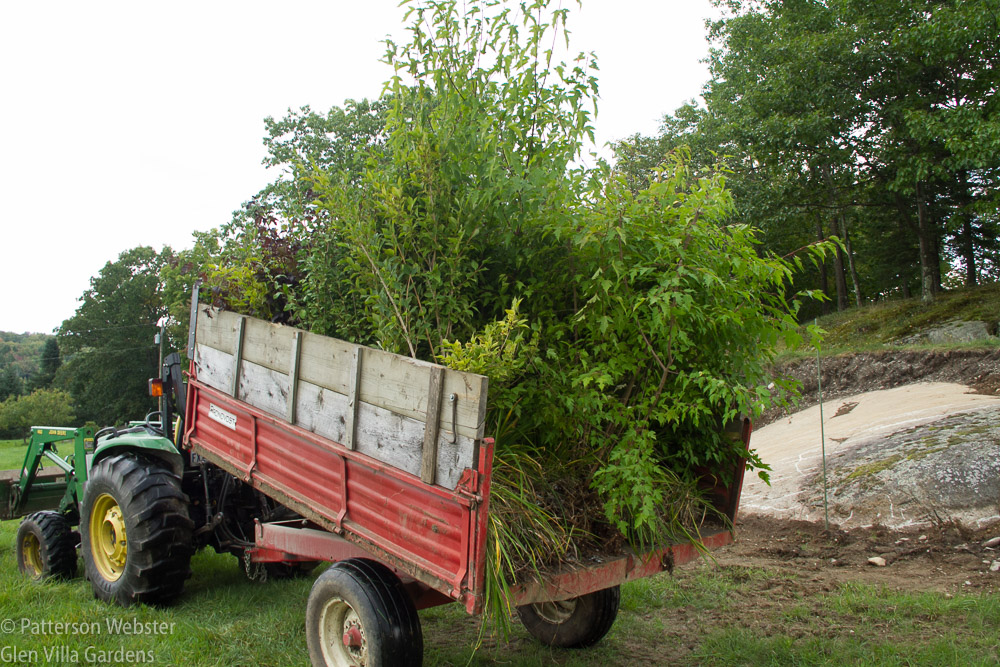
Were there really that many? Yes, that many and more in the back of another trailer.
The fence needs to go up and some fine tuning will almost certainly be needed in the spring. But for now, this crooked toothed, pimply faced teen has a chance of becoming a beauty.
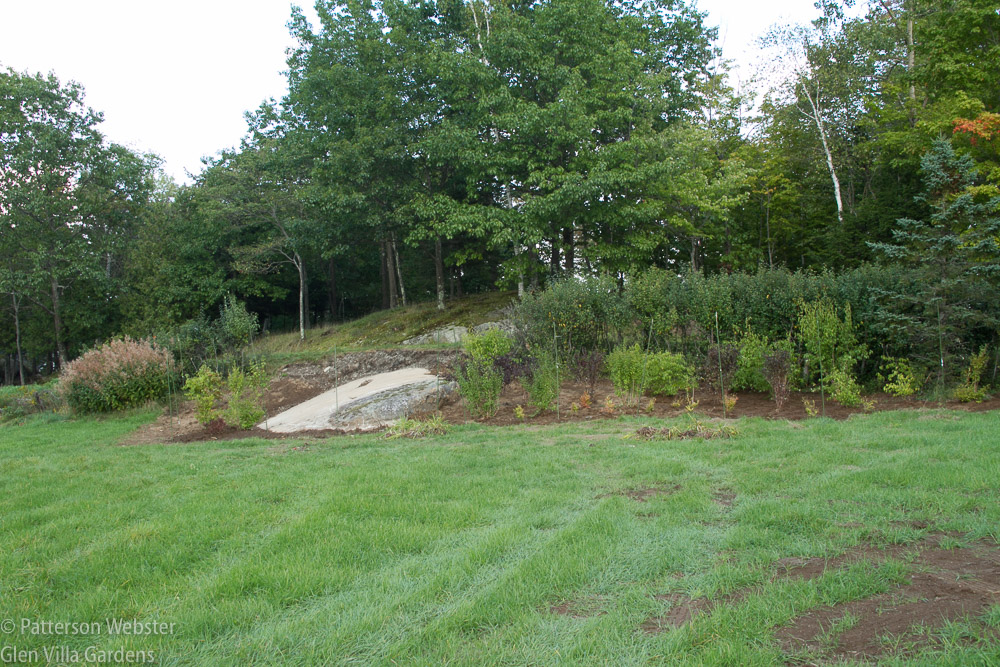
Today I’m happy with the border’s appearance. Next spring I may not be.
Do you have teen-age areas in your garden? How are you helping them grow up?





